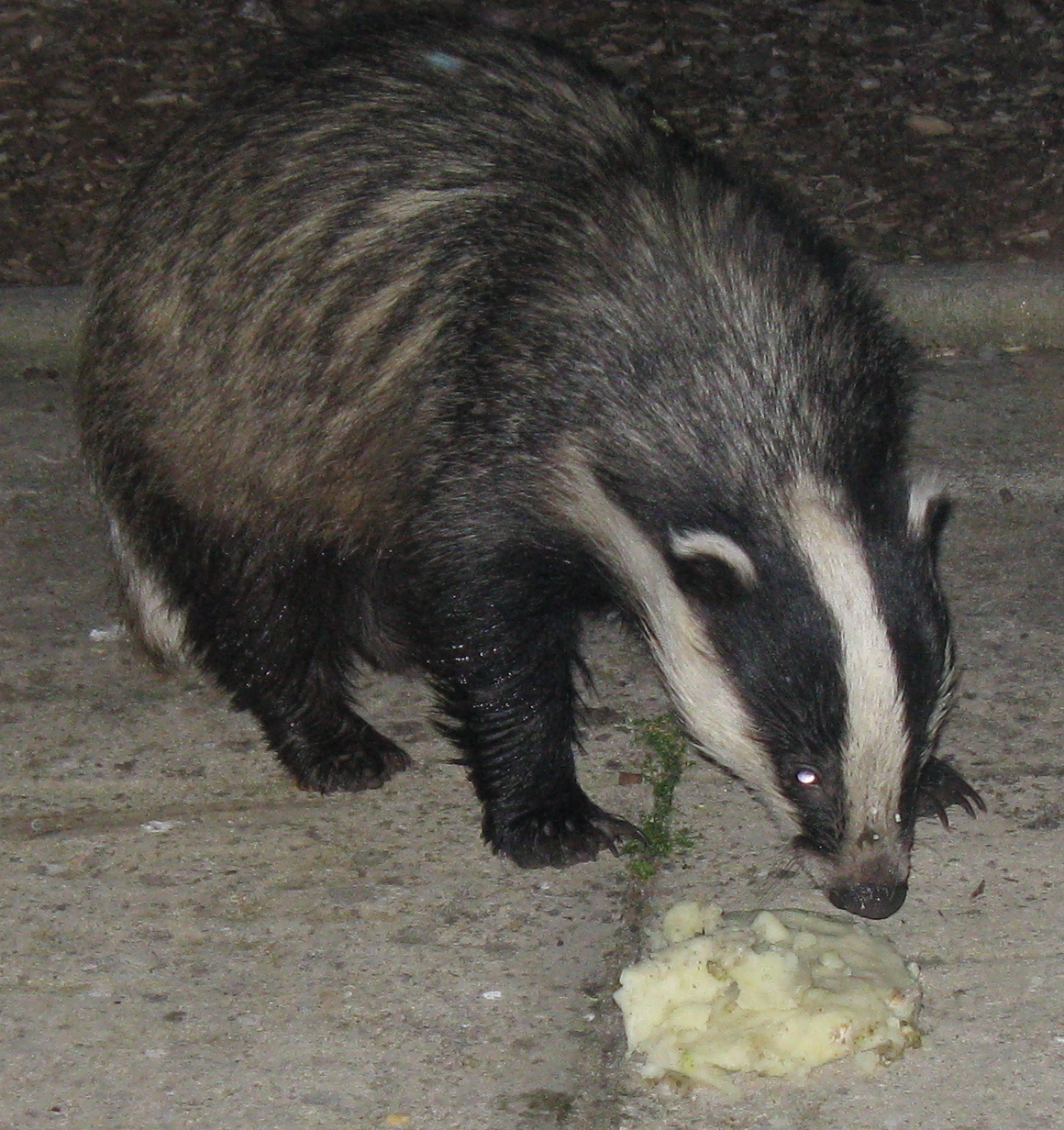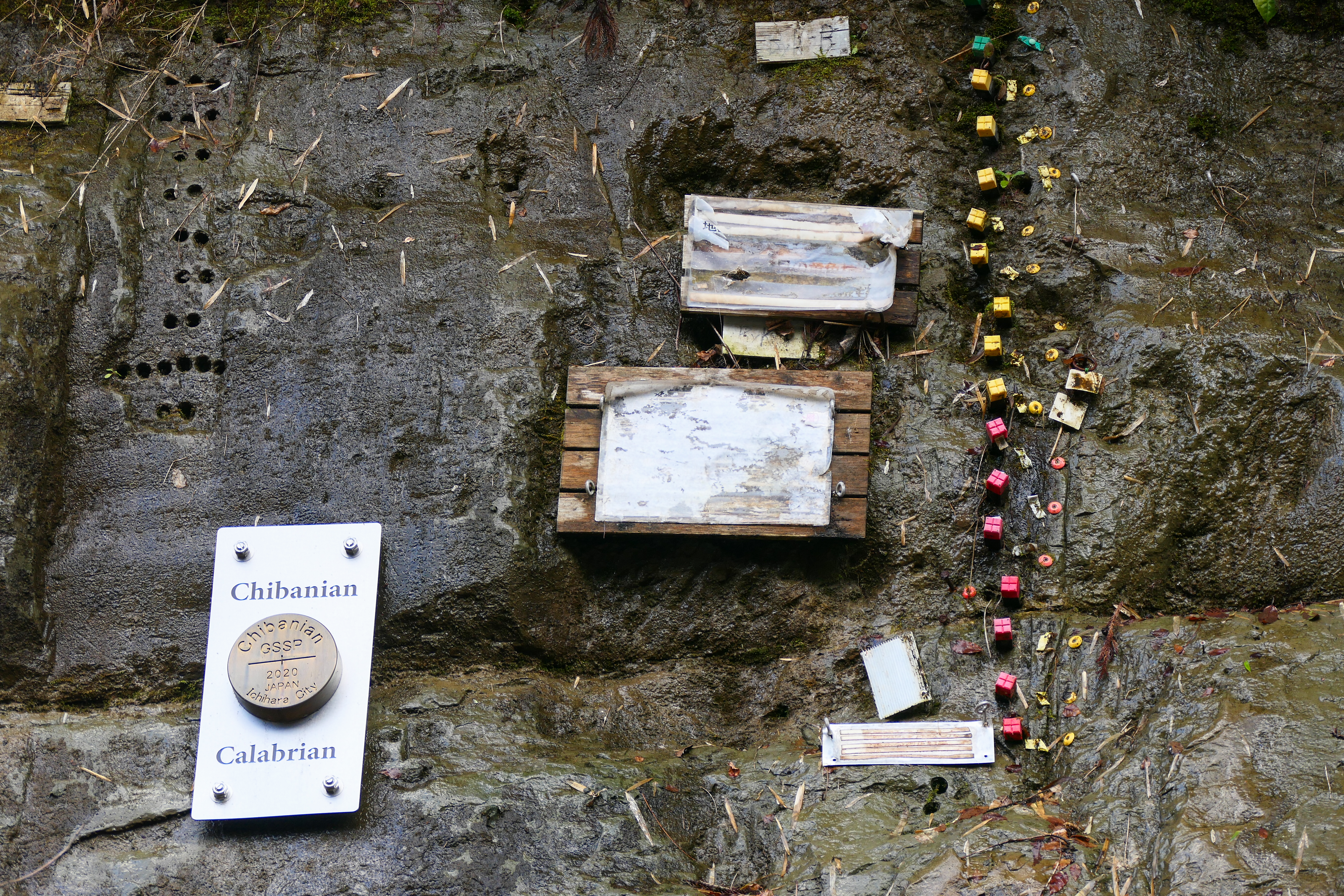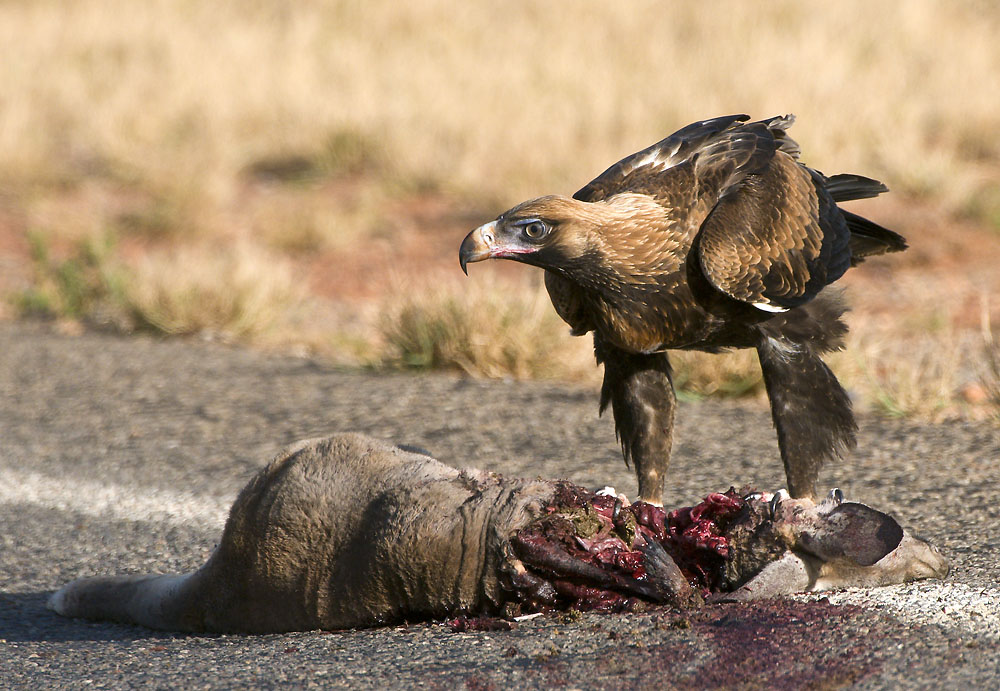|
European Badger
The European badger (''Meles meles''), also known as the Eurasian badger, is a badger species in the family Mustelidae native to Europe and West Asia and parts of Central Asia. It is classified as least concern on the IUCN Red List, as it has a wide range and a large, stable population size which is thought to be increasing in some regions. Several subspecies are recognized, with the nominate subspecies (''M. m. meles'') predominating in most of Europe. In Europe, where no other badger species commonly occurs, it is generally just called the "badger". The European badger is a powerfully built, black, white, brown, and grey animal with a small head, a stocky body, small black eyes, and a short tail. Its weight varies, being in spring, but building up to in autumn before the winter sleep period. It is nocturnal and is a social, burrowing animal that sleeps during the day in one of several setts in its territorial range. These burrows have multiple chambers and entrances, and are ... [...More Info...] [...Related Items...] OR: [Wikipedia] [Google] [Baidu] |
Badger
Badgers are medium-sized short-legged omnivores in the superfamily Musteloidea. Badgers are a polyphyletic rather than a natural taxonomic grouping, being united by their squat bodies and adaptions for fossorial activity rather than by their ancestral relationships: Musteloidea contains several families, only two of which (the "weasel family" Mustelidae and the "skunk family" Mephitidae) include badgers; moreover, both of these families also include various other animals that are not badgers. The fifteen species of mustelid badgers are grouped in four subfamilies: four species of Melinae (genera ''Meles'' and ''Arctonyx'') including the European badger, five species of Helictidinae (genus ''Melogale'') or ferret-badger, the honey badger or ratel Mellivorinae (genus ''Mellivora''), and the American badger Taxideinae (genus ''Taxidea''). Badgers include the most basal mustelids; the American badger is the most basal of all, followed successively by the ratel and the Mel ... [...More Info...] [...Related Items...] OR: [Wikipedia] [Google] [Baidu] |
Sett
A sett or set is a badger's den. It usually consists of a network of tunnels and numerous entrances. The largest setts are spacious enough to accommodate 15 or more animals with up to of tunnels and as many as 40 openings. Such elaborate setts with extensive tunneling take many years for badgers to complete.Badgers.org.uk One sett in Southern England spreads over an estimated area in excess of 2,000 square metres – precise measurement has not been attempted. Another sett, in north-eastern Germany, has been shown to have been in use for over ten thousand years. Setts are typically excavated in soil that is well drained and easy to dig, such as sand, and situated on sloping ground where there is some cover. Sett tunnels are usually between beneath the ground, and they incorporate larger chambers used for sleeping or rearing yo ... [...More Info...] [...Related Items...] OR: [Wikipedia] [Google] [Baidu] |
Middle Pleistocene
The Chibanian, more widely known as the Middle Pleistocene (its previous informal name), is an Age (geology), age in the international geologic timescale or a Stage (stratigraphy), stage in chronostratigraphy, being a division of the Pleistocene Epoch within the ongoing Quaternary Period. The Chibanian name was officially ratified in January 2020. It is currently estimated to span the time between 0.7741 annum, Ma (774,100 years ago) and 0.129 Ma (129,000 years ago), also expressed as 774.1–129 ka. It includes the transition in palaeoanthropology from the Lower Paleolithic, Lower to the Middle Paleolithic over 300 ka. The Chibanian is preceded by the Calabrian (stage), Calabrian and succeeded by the Late Pleistocene. The beginning of the Chibanian is the Brunhes–Matuyama reversal, when the Earth's magnetic field last underwent reversal. Its end roughly coincides with the termination of the Penultimate Glacial Period and the onset of the Last Interglacial period (correspondin ... [...More Info...] [...Related Items...] OR: [Wikipedia] [Google] [Baidu] |
Sociality
Sociality is the degree to which individuals in an animal population tend to associate in social groups (gregariousness) and form cooperative societies. Sociality is a survival response to evolutionary pressures. For example, when a mother wasp stays near her larvae in the nest, parasites are less likely to eat the larvae. Biologists suspect that pressures from parasites and other predators selected this behavior in wasps of the family Vespidae. This wasp behaviour evidences the most fundamental characteristic of animal sociality: parental investment. Parental investment is any expenditure of resources (time, energy, social capital) to benefit one's offspring. Parental investment detracts from a parent's capacity to invest in future reproduction and aid to kin (including other offspring). An animal that cares for its young but shows no other sociality traits is said to be ''subsocial''. An animal that exhibits a high degree of sociality is called a ''social animal'' ... [...More Info...] [...Related Items...] OR: [Wikipedia] [Google] [Baidu] |
Red Fox
The red fox (''Vulpes vulpes'') is the largest of the true foxes and one of the most widely distributed members of the order Carnivora, being present across the entire Northern Hemisphere including most of North America, Europe and Asia, plus parts of North Africa. It is listed as least concern on the IUCN Red List. Its range has increased alongside human expansion, having been Foxes in Australia, introduced to Australia, where it is considered harmful to native small and medium-sized rodents and marsupials. Due to its impact on native species, it is included on the list of the "List of the world's 100 worst invasive species, world's 100 worst invasive species". The red fox originated in Eurasia during the Middle Pleistocene at least 400,000 years ago and later colonised North America sometime prior to 130,000 years ago. Among the true foxes, the red fox represents a more progressive form in the direction of Carnivore, carnivory. Apart from its large size, the red fox is distin ... [...More Info...] [...Related Items...] OR: [Wikipedia] [Google] [Baidu] |
Rabbit
Rabbits are small mammals in the family Leporidae (which also includes the hares), which is in the order Lagomorpha (which also includes pikas). They are familiar throughout the world as a small herbivore, a prey animal, a domesticated form of livestock, and a pet, having a widespread effect on ecologies and cultures. The most widespread rabbit genera are '' Oryctolagus'' and '' Sylvilagus''. The former, ''Oryctolagus'', includes the European rabbit, ''Oryctolagus cuniculus'', which is the ancestor of the hundreds of breeds of domestic rabbit and has been introduced on every continent except Antarctica. The latter, ''Sylvilagus'', includes over 13 wild rabbit species, among them the cottontails and tapetis. Wild rabbits not included in ''Oryctolagus'' and ''Sylvilagus'' include several species of limited distribution, including the pygmy rabbit, volcano rabbit, and Sumatran striped rabbit. Rabbits are a paraphyletic grouping, and do not constitute a clade, as ha ... [...More Info...] [...Related Items...] OR: [Wikipedia] [Google] [Baidu] |
Tuber
Tubers are a type of enlarged structure that plants use as storage organs for nutrients, derived from stems or roots. Tubers help plants perennate (survive winter or dry months), provide energy and nutrients, and are a means of asexual reproduction. Stem tubers manifest as thickened rhizomes (underground stems) or stolons (horizontal connections between organisms); examples include the potato and Yam (vegetable), yam. The term ''root tuber'' describes modified lateral roots, as in sweet potatoes, cassava, and dahlias. Terminology The term originates from the Latin , meaning 'lump, bump, or swelling'. Some writers limit the definition of ''tuber'' to structures derived from Plant stem, stems, while others also apply the term to structures derived from roots., p. 124 Stem tubers A stem tuber forms from thickened rhizomes or stolons. The top sides of the tuber produce shoots that grow into typical stems and leaves and the undersides produce roots. They tend to form at the s ... [...More Info...] [...Related Items...] OR: [Wikipedia] [Google] [Baidu] |
Cereals
A cereal is a grass cultivated for its edible grain. Cereals are the world's largest crops, and are therefore staple foods. They include rice, wheat, rye, oats, barley, millet, and maize (Corn). Edible grains from other plant families, such as amaranth, buckwheat and quinoa, are pseudocereals. Most cereals are annuals, producing one crop from each planting, though rice is sometimes grown as a perennial. Winter varieties are hardy enough to be planted in the autumn, becoming dormant in the winter, and harvested in spring or early summer; spring varieties are planted in spring and harvested in late summer. The term cereal is derived from the name of the Roman goddess of grain crops and fertility, Ceres. Cereals were domesticated in the Neolithic around 8,000 years ago. Wheat and barley were domesticated in the Fertile Crescent; rice and some millets were domesticated in East Asia, while sorghum and other millets were domesticated in West Africa. Maize was domesticated by In ... [...More Info...] [...Related Items...] OR: [Wikipedia] [Google] [Baidu] |
Carrion
Carrion (), also known as a carcass, is the decaying flesh of dead animals. Overview Carrion is an important food source for large carnivores and omnivores in most ecosystems. Examples of carrion-eaters (or scavengers) include crows, vultures, humans, hawks, eagles, hyenas, Virginia opossum, Tasmanian devils, coyotes and Komodo dragons. Many invertebrates, such as the Silphidae, carrion and burying beetles, as well as maggots of Calliphoridae, calliphorid flies (such as one of the most important species in ''Calliphora vomitoria'') and Flesh-fly, flesh-flies, also eat carrion, playing an important role in recycling nitrogen and carbon in animal remains. Carrion begins to decay at the moment of the animal's death, and it will increasingly attract insects and breed bacteria. Not long after the animal has died, its body will begin to exude a foul odor caused by the presence of bacteria and the emission of cadaverine and putrescine. Carrion can harbor many infectious and diseas ... [...More Info...] [...Related Items...] OR: [Wikipedia] [Google] [Baidu] |
Mammal
A mammal () is a vertebrate animal of the Class (biology), class Mammalia (). Mammals are characterised by the presence of milk-producing mammary glands for feeding their young, a broad neocortex region of the brain, fur or hair, and three Evolution of mammalian auditory ossicles, middle ear bones. These characteristics distinguish them from reptiles and birds, from which their ancestors Genetic divergence, diverged in the Carboniferous Period over 300 million years ago. Around 6,640 Neontology#Extant taxon, extant species of mammals have been described and divided into 27 Order (biology), orders. The study of mammals is called mammalogy. The largest orders of mammals, by number of species, are the rodents, bats, and eulipotyphlans (including hedgehogs, Mole (animal), moles and shrews). The next three are the primates (including humans, monkeys and lemurs), the Artiodactyl, even-toed ungulates (including pigs, camels, and whales), and the Carnivora (including Felidae, ... [...More Info...] [...Related Items...] OR: [Wikipedia] [Google] [Baidu] |
Insect
Insects (from Latin ') are Hexapoda, hexapod invertebrates of the class (biology), class Insecta. They are the largest group within the arthropod phylum. Insects have a chitinous exoskeleton, a three-part body (Insect morphology#Head, head, Thorax (insect anatomy), thorax and abdomen (insect anatomy), abdomen), three pairs of jointed Arthropod leg, legs, compound eyes, and a pair of antenna (biology), antennae. Insects are the most diverse group of animals, with more than a million described species; they represent more than half of all animal species. The insect nervous system consists of a insect brain, brain and a ventral nerve cord. Most insects reproduce Oviparous, by laying eggs. Insects Respiratory system of insects, breathe air through a system of Spiracle (arthropods), paired openings along their sides, connected to Trachea#Invertebrates, small tubes that take air directly to the tissues. The blood therefore does not carry oxygen; it is only partly contained in ves ... [...More Info...] [...Related Items...] OR: [Wikipedia] [Google] [Baidu] |
Earthworm
An earthworm is a soil-dwelling terrestrial invertebrate that belongs to the phylum Annelida. The term is the common name for the largest members of the class (or subclass, depending on the author) Oligochaeta. In classical systems, they were in the order of Opisthopora since the male pores opened posterior to the female pores, although the internal male segments are anterior to the female. Theoretical cladistic studies have placed them in the suborder Lumbricina of the order Haplotaxida, but this may change. Other slang names for earthworms include "dew-worm", "rainworm", "nightcrawler", and "angleworm" (from its use as angling hookbaits). Larger terrestrial earthworms are also called megadriles (which translates to "big worms") as opposed to the microdriles ("small worms") in the semiaquatic families Tubificidae, Lumbricidae and Enchytraeidae. The megadriles are characterized by a distinct clitellum (more extensive than that of microdriles) and a vascular system ... [...More Info...] [...Related Items...] OR: [Wikipedia] [Google] [Baidu] |









